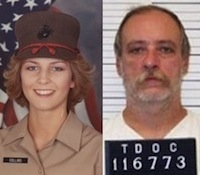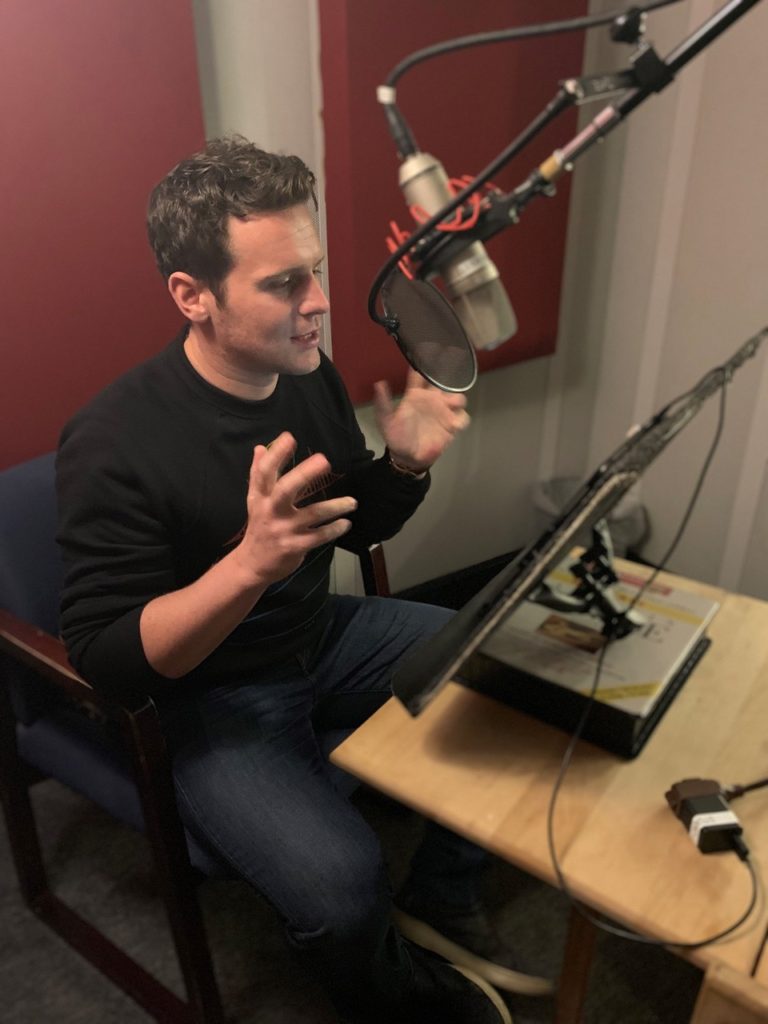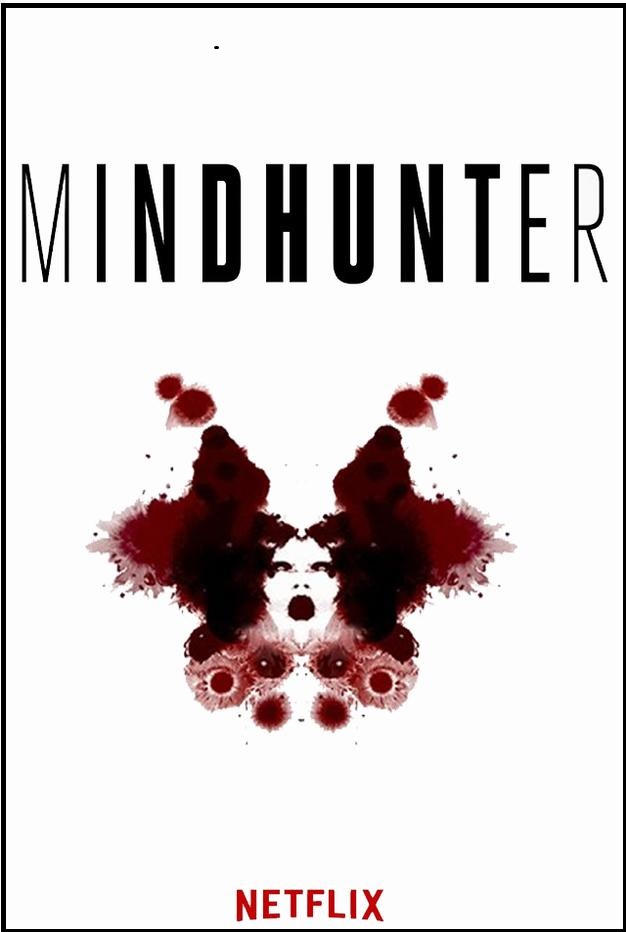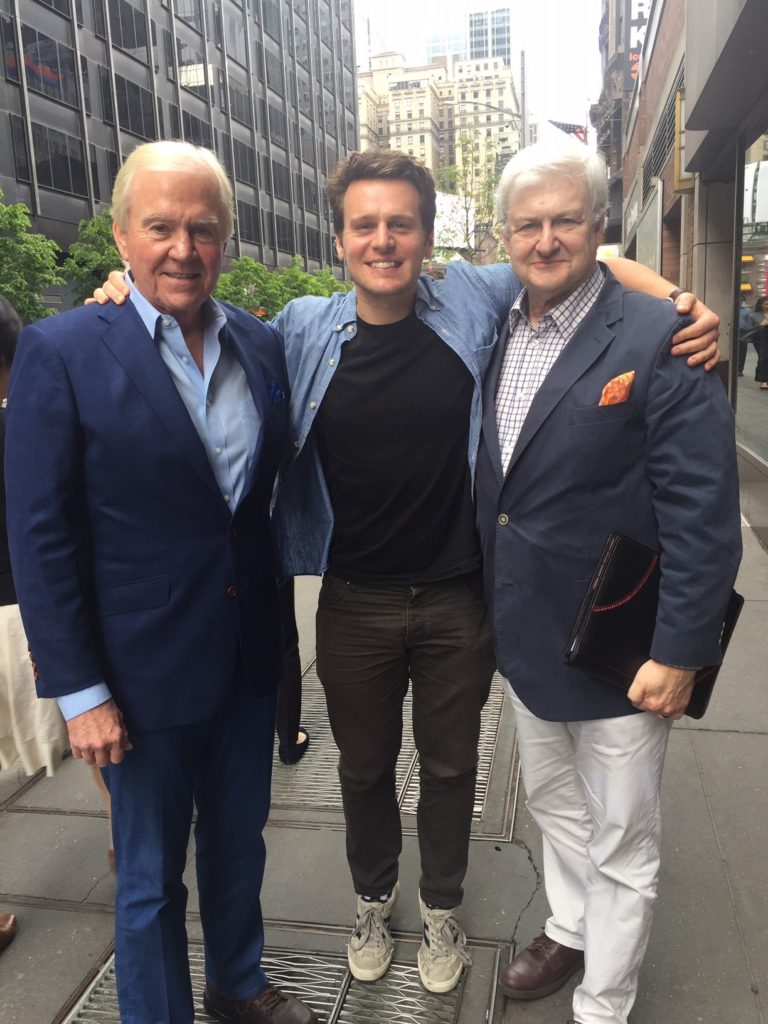
Suzann Collins & Sedley Alley
In the photo insert of our new book, LAW & DISORDER, there are facing pictures of Suzanne Marie Collins on the left and Sedley Alley on the right. The image of Ms. Collins is an official U.S. Marine Corps photograph, a portrait taken just after she completed boot camp at Parris Island, South Carolina in August 1984. With a waving Stars and Stripes in the background, the trim, light-haired eighteen-year-old beauty is in her uniform and eagle, globe and anchor cap, smiling at her hard-won accomplishment. She hoped her future endeavors in the corps would lead to her twin dreams: to graduate from the Naval Academy and be part of the first class of female Marine fighter pilots.
Instead, in eleven months she would be dead.
And that brings us to the image on the right. It is also an official photograph, taken by the Tennessee Department of Corrections when Mr. Alley, by this time Prisoner 116773, entered the system. Because on the evening of July 12, 1985, the day before Lance Corporal Collins was to graduate from avionics school at the Memphis Naval Air Station in Millington, Tennessee, she was jogging on base when she was attacked, sexually assaulted and brutally murdered by Mr. Alley, an angry and inadequate man about a foot taller than she and twice her weight.
This juxtaposition of images may make some people cringe, and I count John Douglas and myself among them. But we did it for a reason: On that horrible night, these two individuals who had never met, who were so opposite in every way, were bound into a relationship that Suzanne did not want, but that Alley created and then had no right to dismiss.
Is this technical observation important? You’re damn right it is! And here’s why:
For a long time, victims of criminal violence and their survivors had no standing in the criminal justice system. A murder is technically a crime against the state, as it should be. This is a concept that hearkens all the way back to British common law and was a great leap forward in political thinking – i.e., if you harm any of the king’s subjects, you are harming the king himself and therefore you will be dealt with by the state.
But the problem is that too often it meant that all dealings would be between the state and the defendant and the victim was not considered to have any personal stake in the proceeding. Those of us in the victims’ rights movement have always felt that was wrong and have worked hard to give victims, their families and survivors full participation in the trial, sentencing and any subsequent parole hearings.
Many civil libertarians object to this, particularly on the topic of the “victim impact statement,” which is at the heart of our demands regarding sentencing. It is argued that if a judge allows a murder victim’s survivors to tell the court and jury about the victim and how the crime has affected them, it will be prejudicial to the convicted defendant. If the sentencing authority – whether it is jury or judge – is allowed to hear this plea, it will mean unequal justice under law because the defendant is likely to receive a harsher sentence than if no victim impact statement were allowed.
To which we say, Wait a minute!
At the sentencing hearing, the defendant is allowed to bring in all manner of mitigating factors as to why his punishment should be lessened. Does it not seem just that the other party to this unwanted relationship should be able to say why his punishment should be appropriately harsher? This is what we call balancing the scales, at least so far as our imperfect earthly justice can afford.
The offender is the one who created the relationship. He should not be able to weasel out of it when it no longer suits his cruel and evil purposes.
That is only fair.



























This IS one of those cases that haunt me.
I remember this horrible case from JD’s 1st book and will never forget it. The victims story (victimology) was central to the whole case and so compelling that if you ever read this young womans life story and then what was done to her by her rapist murderer, you’ll never forget it either.
Violent crime against persons may be a crime against the state, but by definition it is just as much a crime against a ‘human person’. To take the human person who the crime was done to out of the crime, out of the process is ridiculous. In violent crime we’re not talking in the abstract, the crime/ violence was not done to a tree or a rock but to a human person, that’s the very thing that by law makes it a crime…that it was done to a living breathing human person! The victim therefore, victim impact, victims story ‘must’ be considered just by simple logic as well as to do justice.
One thing I’m against though is those states that allow a jury to decide the sentence in a murder/ violent crime, that’s exactly why we have a ‘judge’ in the courtroom. A dispassionate, highly educated, experienced professional, accountable to the public, to having heard the victim impact statement and the case and facts, ‘judge’ sentence by ‘justice’. A jury on the other hand is composed of people not likely to be well educated, not experienced/ not trained in criminal justice, who may have no prior exposure to violent crime, is accountable to no one for their decision….and so can be swayed by passion/prejudice/emotion/ or any number of things. That’s why in all British law, and all American law (till recently) the jury has always been limited to deciding ‘guilt’ only. If we’re going to have the jury decide guilt and sentence I don’t see how that’s any different than mob rule and judge might as well stay home.
I am radically against both victims and defendants appealing to the empathy of the jury. I debated this with some members of my anti-death penalty group, who support this idea with defendants who are mentally ill. However, I don’t think it’s fair and it leads to racism and (anti-male) sexism.
Appealing to juries appeals to their biases. White, female, middle-and-upper class victims and defendants have a huge advantage over black, male, poor victims and defendants.
It’s hard enough to answer “Did he (or she) do it?” I don’t think we should confound that already difficult question. Questions such as “Are they mentally ill?” (For victims) “Did it impact their lives adversely?” (For defendants) “Did they suffer abuse?” are inappropriate if we want our criminal justice system to be scientific.
Allowing the victim to address the Court not only balances the defendant’s pleas for mercy, but more importantly re-empowers the victim. The psychological damage to any victim is difficult to quantify and hence difficult to understand. But then there is this story, http://www.huffingtonpost.com/2013/02/14/amy-locane-bovenizer-sentenced_n_2687863.html?utm_hp_ref=celebrity
I am agnostic on the question of whether that sentence is appropriate or not. However, my default position is that the judge heard the evidence, saw a presentence report, listened to the evidence for and against the defendant, has heard similar cases, and knows the general statutory guidelines, so he has the benefit of the doubt. Here is the problem, though. The family of the woman who was killed may feel LESS empowered because the judge gave the defendant less than the maximum sentence.
Last summer some blankety-blank stole my set of golf clubs out of our garage. I truly loved those clubs, modern persimmon woods from Louisville Golf, a beautiful putter from Positive Putter and custom irons from Cleveland Golf. I am a terrible golfer, but my clubs also drew a lot of oohs and aahs. If the scoundrel who took those clubs was ever caught, by preferred punishment would be public flogging followed by forced limb amputation ending with summary execution. I may be overreacting. When a judge sentences such a defendant to probation, public service and restitution, I may be outraged, but clearly I should not set the sentence.
There have been a number of articles over the years about victim-offender mediation. It seems to me that may be appropriate in certain circumstances, though not in more serious cases. But it does seem that it is important for victims rights advocates to make the victims aware that the impact statement is an important factor for the court, but it is not the only factor.